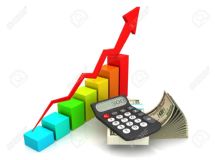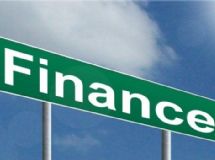The Stochastic oscillator is designed to oscillate between 0 and 100. Low levels mark oversold markets, and high levels mark overbought markets. Overbought means too high, ready to turn down. Oversold means too low, ready to turn up.Look for buying opportunities when the Stochastic oscillator nears its lower reference line. Look for selling opportunities when the Stochastic oscillator nears its upper reference line. Waiting for the Stochastic oscillator to drop is intellectually hard because markets look horrible near bottoms, which is precisely the perfect time to buy. When the Stochastic indicator rallies to its upper reference line, it tells you to start looking for selling opportunities. This also goes against the grain emotionally. When the Stochastic indicator rallies to a top, the market often looks fantastic, which is a good time to sell.New traders mess up by trying to over simplify trading. Don't do this. Use the Stochastic indicator with other technical indicators. Keep in mind that when a powerful uptrend begins, the Stochastic indicator quickly becomes overbought and begins showing premature sell signals. In a sudden panic sell off, the Stochastic indicator quickly becomes oversold and begins showing premature buy signals. Therefore, this indicator only works if you use it with other trend-following indicators.Should you wait for the Stochastic indicator to turn up before buying? Should you wait for it to turn down before selling? No. If you wait until the Stochastic turns, you'll miss out on making a lot of money. The idea is to enter, or exit, when the Stochastic reaches some kind of extreme. View very low or very high Stochastic readings as a measure of the emotion in the crowd that is trading your stock. When there are more emotional traders in a stock, the better you can take money away from those traders. It is easier to make money from emotional traders than it is from calm, rational traders.If you see a positive divergence between the Stochastic and the price of a stock, go long. A positive divergence is when the stock price drops to a new low, but the Stochastic indicator makes only a slight low and does not break to a new low. Do the opposite on the downside. If you see a negative divergence between the Stochastic and the price of a stock, go short. A negative divergence takes place when a stock rises to a new high, but an indicator drops or hardly rises.You should not buy a stock when the Stochastic is high. The opposite is also true, do not sell or short a stock then the Stochastic is low. This is probably the most accurate way to use the Stochastics. Reverse your thinking and look at it as telling you when NOT to trade a stock. Indeed, moving averages are superior to the Stochastic at picking up on trends, the ADX is better at catching entry and exit points, but the Stochastic is the best at telling you when you should NOT trade a stock.
SHARE






































